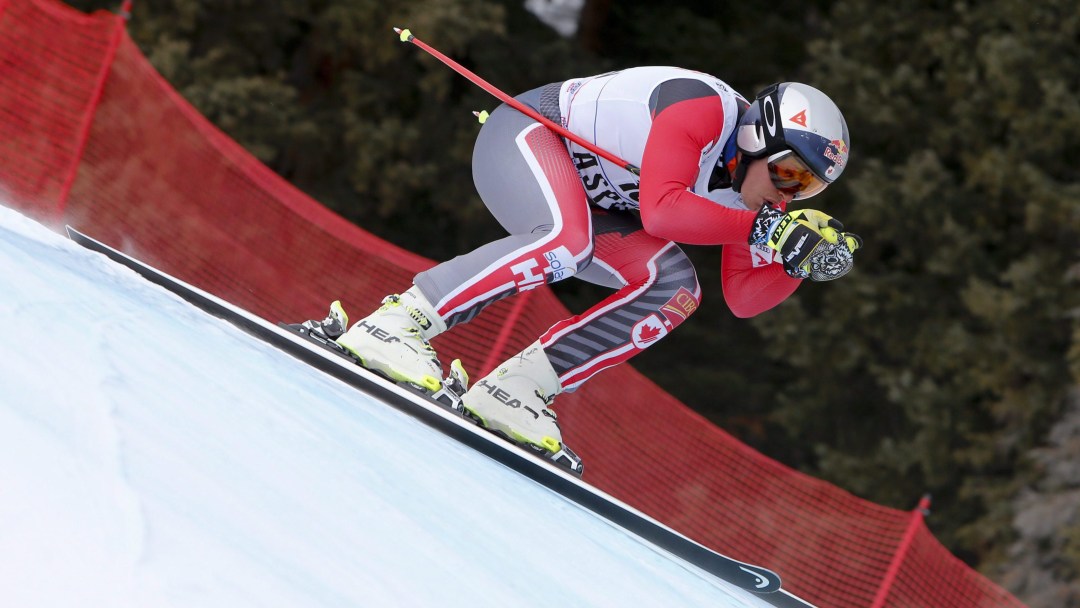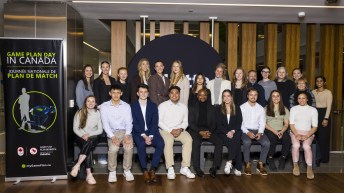2017-18 Winter Preview: Alpine skiers set to hit the slopes
It’ll soon be time for schussing and slaloming down some of the greatest ski slopes on the globe.
Yes, the alpine skiing World Cup season is upon us.
The technical skiers will be first out of the start gate, opening the season on Saturday in Soelden, Austria. A few weeks later the speed skiers will get in their first runs of the Olympic season, beginning with the traditional Lake Louise Winterstart World Cup.
Who is competing?
Alpine Canada announced in May that these skiers would be members of the World Cup team:
Men Women
Benjamin Thomsen Ali Nullmeyer
Broderick Thompson Amelia Smart
Brodie Seger Candace Crawford
Dustin Cook Erin Mielzynski
Erik Guay Laurence St-German
Erik Read Marie-Michèle Gagnon
Jack Crawford Mikaela Tommy
Jeffrey Read Roni Remme
Manuel Osborne-Paradis Stefanie Fleckenstein
Philip Brown Valérie Grenier
Trevor Philp
When and where are they competing?
There are 30 FIS World Cup stops before PyeongChang 2018 begins, many with multiple events. Among them are some of the most traditional stops on the circuit:
October 28-29 – Soelden, Austria – Giant Slalom (men and women)
November 11-12 – Levi, Finland – Slalom (men and women)
November 22-26 – Lake Louise, Alberta – Downhill, Super-G (men)
November 28-December 3 – Lake Louise, Alberta – Downhill, Super-G (women)
November 29-December 3 – Beaver Creek, Colorado – Downhill, Super-G, Giant Slalom (men)
December 13-16 – Val Gardena, Italy – Downhill, Super-G (men)
December 14-17 – Val d’Isere, France – Downhill, Super-G (women)
December 28-29 – Lienz, Austria – Giant Slalom, Slalom (women)
January 6-7 – Adelboden, Switzerland – Giant Slalom, Slalom (men)
January 9-14 – Wengen, Switzerland – Downhill, Combined, Slalom (men)
January 16-21 – Kitzbuehel, Austria – Downhill, Super-G, Slalom (men)
January 18-21 – Cortina d’Ampezzo, Italy – Downhill, Super-G (women)
How do they qualify for PyeongChang 2018?
It is difficult to condense the Olympic qualification process into a couple of sentences, but it is based around the fact that a maximum of 320 alpine skiers can compete in PyeongChang.
The qualification window opened on July 1, 2016 and will close on January 21, 2018. Results achieved by the top 500 skiers on the Olympic FIS Points List in their two best events (of downhill, super-G, giant slalom, slalom, alpine combined) during that time will create an Olympic Quota Allocation List. Starting from the top of the list, one Olympic berth will be awarded per athlete until 320 skiers are qualified.
But there are some important limitations. A country can qualify a maximum of 22 alpine skiers. Within that, there is a maximum of 14 per gender. For each event, a country can enter up to four skiers.
What should we watch for?
Erik Guay enters the season with five career World Cup victories, three back of Steve Podborski for the most ever by a Canadian man. Any podiums would build on his national record total of 25. He is coming off a remarkable performance at the world championships in February where he won gold in the super-G and silver in the downhill – making him the first alpine skier to win multiple world medals after their 35th birthday. Now all that’s left for him to win is an Olympic medal.
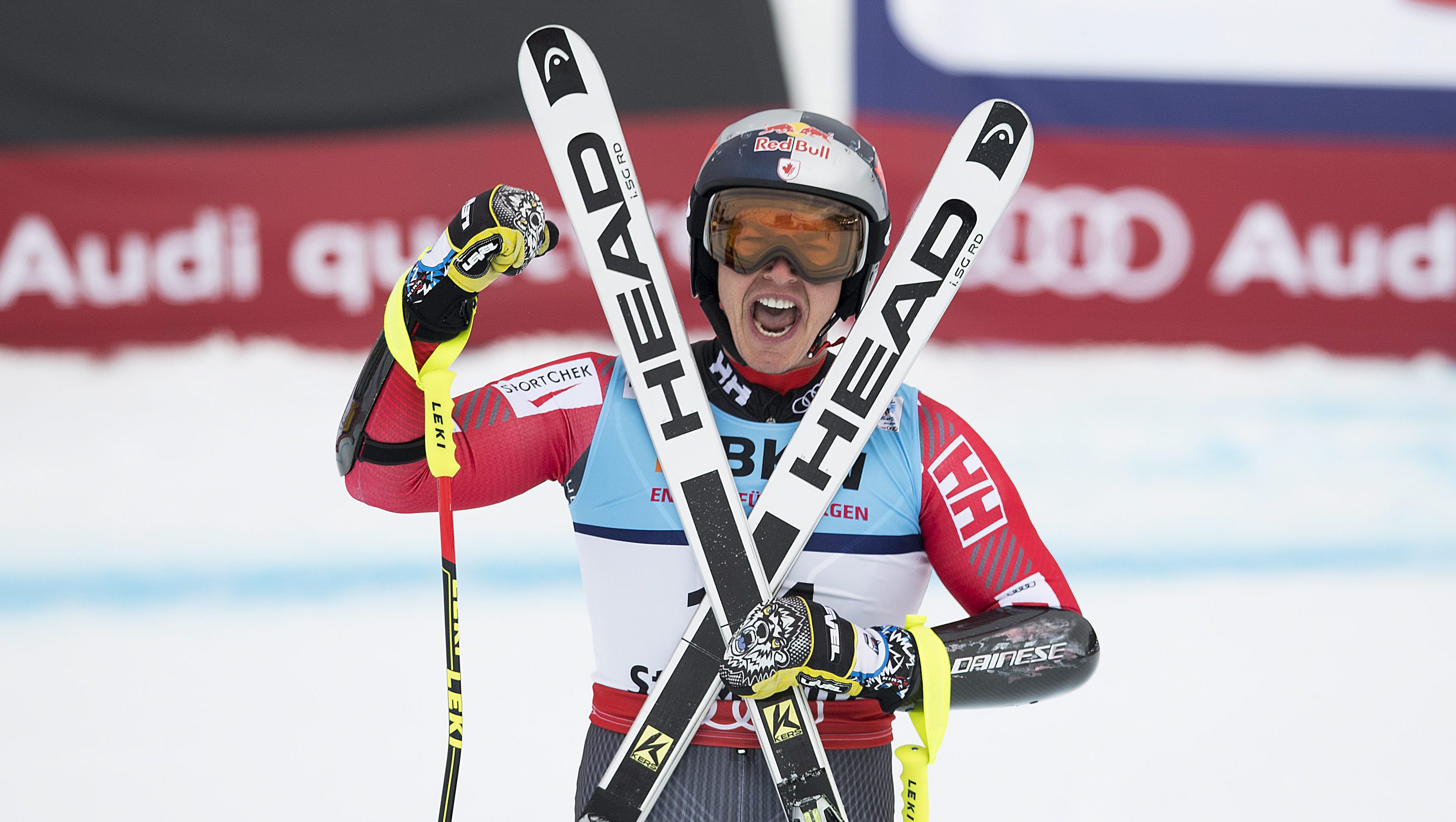
Erik Guay of Canada reacts in the finish area during the men’s Super-G race at the 2017 Alpine Skiing World Championships in St. Moritz, Switzerland, Wednesday, Feb. 8, 2017. (Peter Schneider/Keystone via AP)
But Guay didn’t stand on the podium alone in St. Moritz as Manuel Osborne-Paradis won bronze in the super-G. He went into those worlds feeling like he had a chance to do well because it’s a course that is well-suited for gliders, like himself. That is also the case in PyeongChang. “It makes it just that much more fun to prepare because deep down inside you know you do really have a shot and it’s not a shot in the dark,” Osborne-Paradis told Olympic.ca in June.
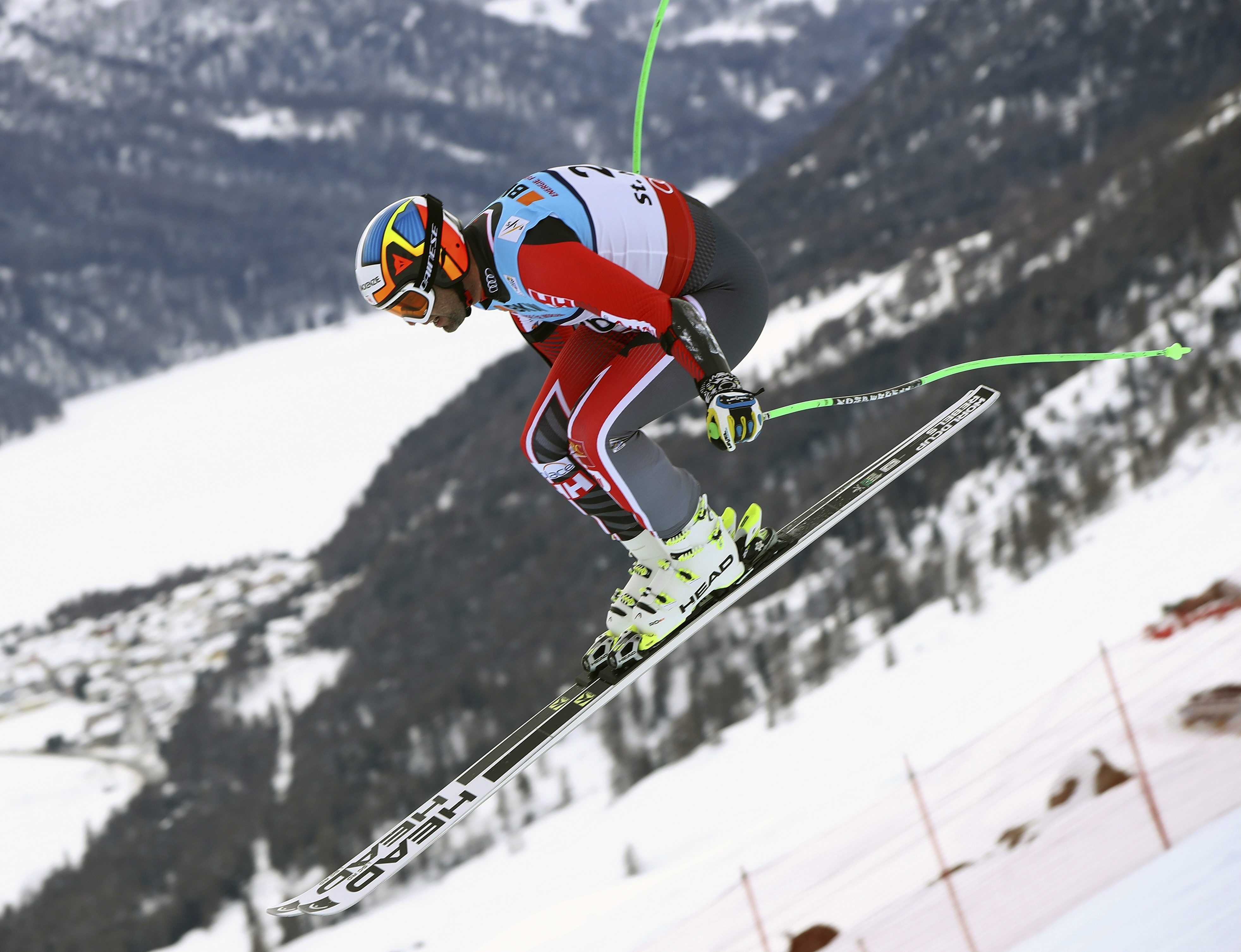
Canada’s Manuel Osborne-Paradis is airborne during the men’s super-G, at the Alpine Ski World Championships, in St. Moritz, Switzerland, Wednesday, Feb. 8, 2017. (AP Photo/Alessandro Trovati)
Dustin Cook is looking for “bigger and better” after spending last season just trying to get back into competition mode, having missed the season prior after undergoing knee surgery. He’d like to find the form that got him a super-G silver at the 2015 World Championships and his first World Cup victory just over a month later.
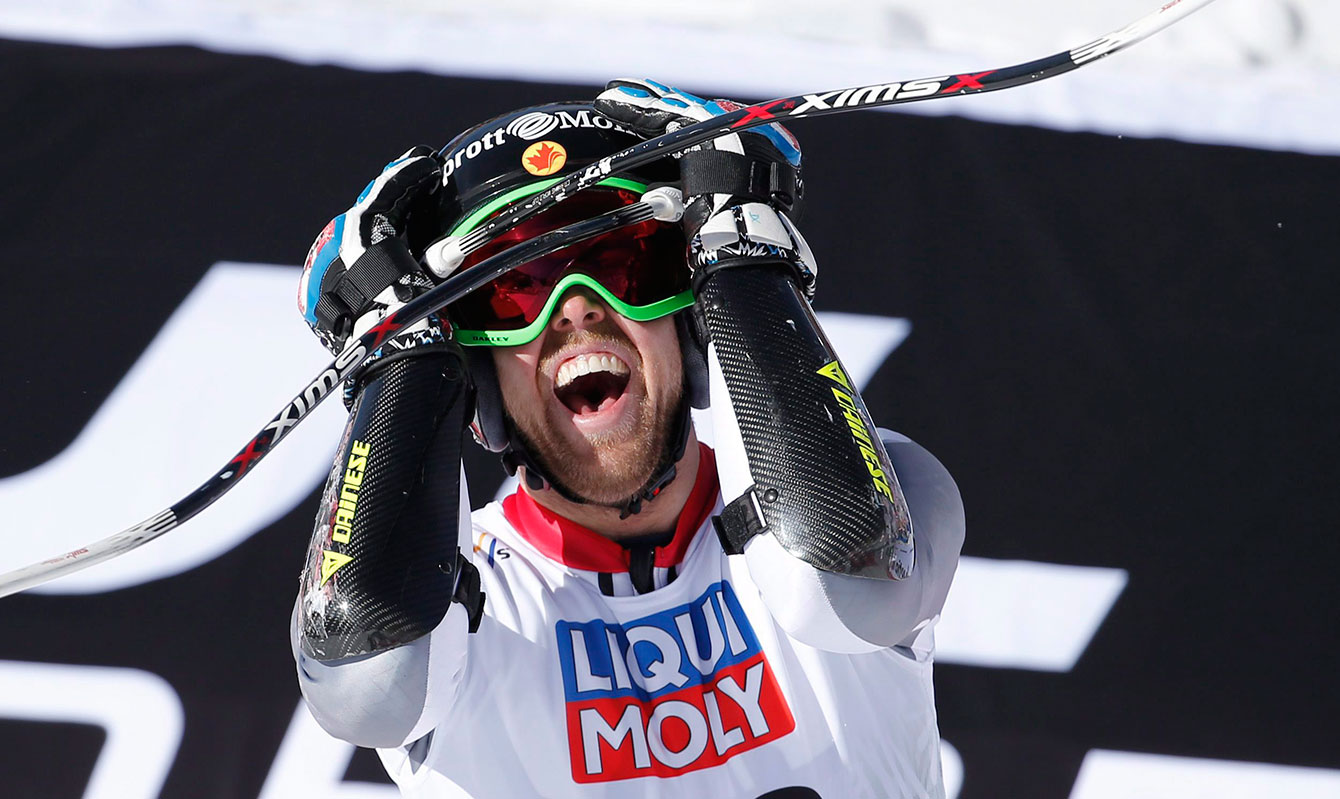
Dustin Cook reacts to finishing second in the super-G at the 2015 FIS Alpine World Championships.
For the first time since Calgary 1988, there will be a new event on the Olympic program. The team event has quickly become a favourite of the Canadians who compete in it. That tends to happen when you win a world championship silver medal, as they did in 2015. There may not be a lot of World Cup podiums among the technical skiers best suited for the team event, but as Candace Crawford, Erin Mielzynski, Philip Brown, Trevor Philp and Erik Read can attest, sometimes David can beat Goliath.

Canada’s Trevor Philp, top, Candace Crawford, left, Erin Mielzynski, bottom, and Phil Brown during the mixed worlds team skiing event at the alpine skiing world championships, Tuesday, Feb. 10, 2015, in Vail, Colo. (AP Photo/John Locher)
If that Read surname sounds familiar, it should. Erik is the son of Crazy Canuck Ken Read and looking to become a second-generation Olympian. Another skier with a notable family tie is Broderick Thompson. You may have heard of his Olympic ski cross champion sister, Marielle.

